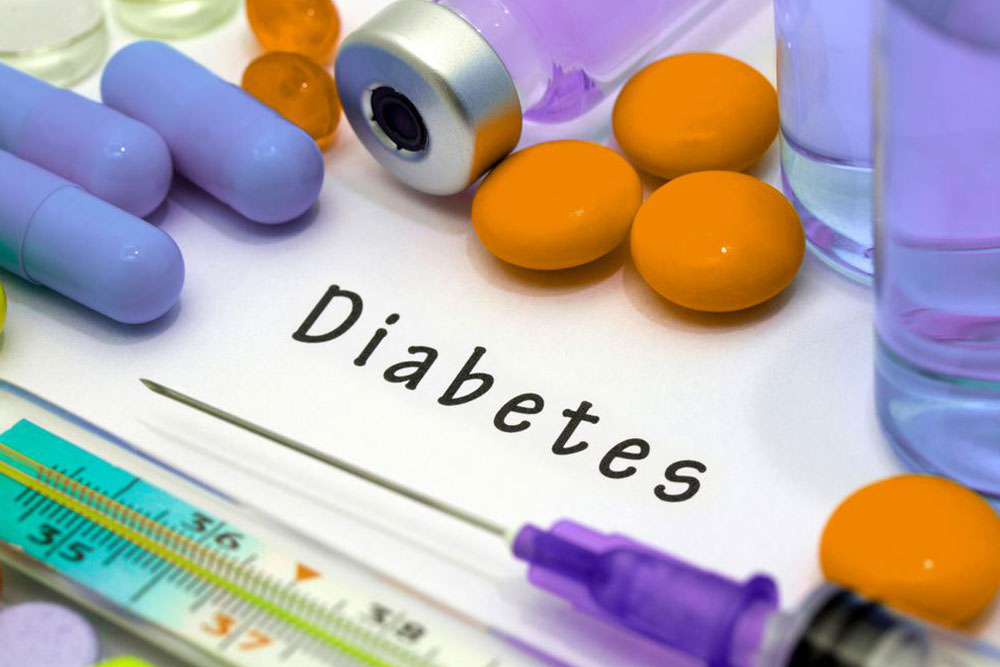Common Treatment of Type 2 Diabetes
Diabetes is one of the leading global health issues. It is primarily divided into two types- Type 1 diabetes and Type 2 diabetes. However, a third rare form of diabetes, known by the name gestational diabetes, also exists. In Type 1 diabetes, the immune system annihilates beta cells that are responsible for producing insulin, whereas in Type 2 diabetes, either the body isn’t able to appropriately use the insulin produced by the beta cells or the body isn’t ready to produce the required amount of insulin.

While type 1 diabetes can be treated with insulin, different forms of type 2 diabetes medication involve taking chemicals in the form of tablets in addition to having insulin. Planned physical activity and diet control also assist in dealing with Type 2 diabetes.
The inability of the body to use insulin is known as insulin insensitivity. While type 2 diabetes develops in adulthood, in select cases, it might develop during childhood. Heredity also plays a major role in transferring Type 2 diabetes. About 9 out of 10 diabetics suffer from Type 2 diabetes. Different forms of Type 2 diabetes medication have different effects on the body.
The majority of the forms of type 2 diabetes medication are available as oral drugs and only a few are available as injections. Different type of type 2 diabetes medications have distinct effects. Some common treatments for diabetes have been listed below.
Alpha-glucosidase inhibitors
This type of type 2 diabetes medication works by breaking down starch-rich food and table sugar, thereby lowering blood sugar levels.
These medicines are prescribed by doctors and need to be taken before meals. It is, however, important to consult a doctor for the actual dosage of the prescribed medicines.
Biguanides
Biguanides are another popular form of medication for type 2 diabetes. This medicine assists in decreasing the amount of sugar made by the liver. Biguanides reduce the amount of sugar absorbed by intestines and make the body more sensitive to insulin, thus alleviating problems caused by the disease. All medications that fall into this category share the same primary ingredient.
Dopamine Agonist
The only medicine that falls into the category of Dopamine Agonist works on Type 2 diabetes by affecting the body’s rhythms and preventing insulin resistance.
DPP-4 Inhibitors
In addition to allowing the pancreas to produce more insulin, DPP-4 inhibitors also reduce blood sugar levels.
Glucagon-like peptides
Glucagon-like peptides increase beta cell growth, reduce appetite, and slow stomach emptying. These drugs act as the natural hormone incretin.
Meglitinides
Although meglitinides assist in releasing insulin, they aren’t meant for everyone. This is because in some cases, these medicines might drastically lower the blood sugar levels.
Sodium Glucose Transporter (SGLT) 2 inhibitors
Sodium-glucose transporter 2 inhibitors help in flushing out glucose via the urine.
Sulfonylureas
With the help of beta cells, Sulfonylureas aid in making the body produce more insulin.
Thiazolidinediones
Along with helping in decreasing glucose level in the liver, Thiazolidinediones assist fat cells in making better use of insulin. Many popular medicines fall into this category of type 2 diabetes medication.
Each of the type 2 diabetes medications has their advantages and downsides. Based on the severity of type 2 diabetes and other health factors, a doctor prescribes the appropriate medication to type 2 diabetic patients.
Apart from these medications, it is essential to incorporate some lifestyle and dietary alterations in your routine to manage the condition. Some of the changes have been listed below.
Exercise and weight loss
Reducing excess weight and maintaining a healthy body weight can help treat type 2 diabetes effectively. Exercising and reducing weight can increase the sensitivity of the body to insulin in addition to controlling the body’s blood sugar levels. People with type 2 diabetes can consider getting engaged in aerobic activities and resistance training along coupled with a low-intensity workout. Additionally, you can opt for activities like dancing, swimming, yoga, and the like.
Diabetes diet
Following a diabetic diet is a great way to keep blood sugar levels controlled. However, it is essential that you consider certain factors while incorporating a diabetic diet into your routine. It is essential that you carefully plan the amount of nutrients, carbs, fats, Glycemic index, and the like contained in the food items you choose to consume. In addition to the type of food, people with diabetes should also keep a tab on the meal timings and the amount of insulin administered. While a diabetic diet should be nutritious, well balanced, and low in fat, simple sugars, and cholesterol, it is important that you get in touch with an experienced dietician or consult your doctor for reference.




